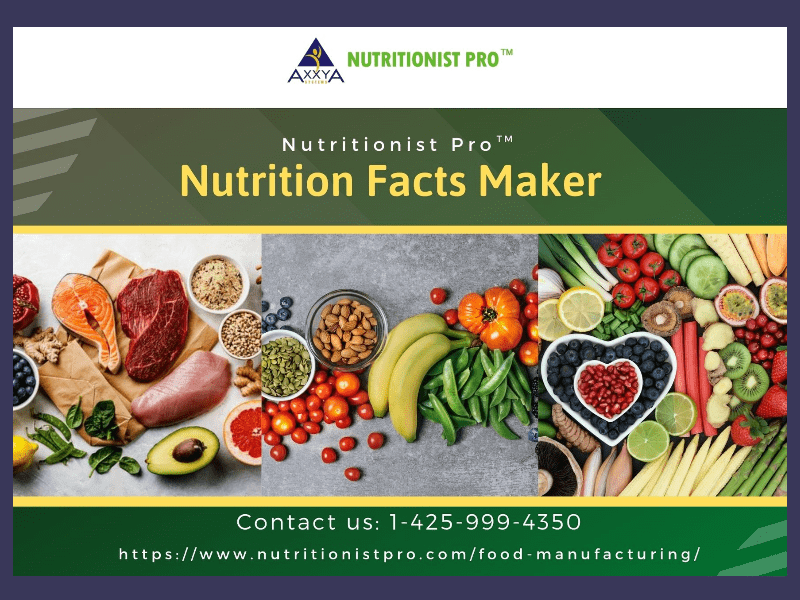With a separate added sugar listing and other changes, the new nutrition facts panel requires some work by food manufacturers to become compliant.
The standard nutrition facts panel, which has been around for several years, has gotten changes in all the basic information: serving size, daily percentage value, the addition of new nutrients and design and much more. So, now food manufacturers need to calculate the food nutrients and display their nutritional facts on food labels as per the new guidelines.
While the new label is similar to the previous rules, here are some key changes:
- You have to use a larger, bold font size to more accurately reflect the way people buy and eat food.
- There’s no way to miss calorie counts.
-
Information about the value for single servings will be more realistic to reflect how much people currently eat at one time. Let’s face it: People eat more now than they used to. A serving of soft drinks, for example, has increased from 8 to 12 oz; ice cream is now two-thirds of a cup, not half a cup. However, now there are many instances when serving sizes may become smaller, as the new requirements are made to reflect an average portion.
-
Some formerly listed vitamins like vitamin A and C in products are now replaced with vitamin D, and Potassium. Information about these nutrients must appear on the new labels. Food manufacturers must declare the actual amount in addition to the %DV (daily value).
-
The information about “calories from fat” is now made redundant in the new label to make room for total calories, total fat, saturated fat, trans fat and added sugar information.
-
Food manufacturers can use “dual-column” labels to indicate both “per-serving” and “per-package” calorie and nutrition information for certain multi-serving food products which might be consumed in one sitting, such as a pint of ice cream or a 4-oz. bag of chips. FDA observes that a dual-column enables consumers to better understand how many calories and nutrients they get if they eat or drink the entire package or unit at one time.
Food purchases are largely driven by what’s on the nutrition facts label and what is listed as ingredients. However, there are many consumers who don’t read labels when they are buying a food product. But, food manufacturers still have to calculate food nutrient values in line with the FDA guidelines and label their products accordingly.
The challenge lies in moving quickly on labeling revisions, if needed. For those who perform nutrition analysis and labeling by hand or through a laboratory method, the tasks can be time consuming.
How can food manufacturers save themselves from this scenario?
Calculating your food nutritional values and creating nutrition labels can be effortless and hassle-free, if you implement a database nutrition facts maker like Nutritionist Pro™.
Quick View of User Benefits:
- Step-By-Step Screens For Quick Creation
- See Nutrient Values Based On Guidelines Around The World
- Easy-To-Use For Simple Or Complex Recipes
- Automatically Calculate Content Claims
- Access From Anywhere using a smart device or PC
- Easy-To-Use Wizards
- Affordable Pricing
Nutritionist Pro™ has built-in tools to automatically calculate nutrient claims for many regions in the world and make food import/export easier following complicated food regulations for many regions around the world. Available both as online and desktop versions, Nutritionist Pro™ has made it easier to create and manage foods labels for your food items.
Want to get started with Nutritionist Pro™ for your food business? Contact us here.
